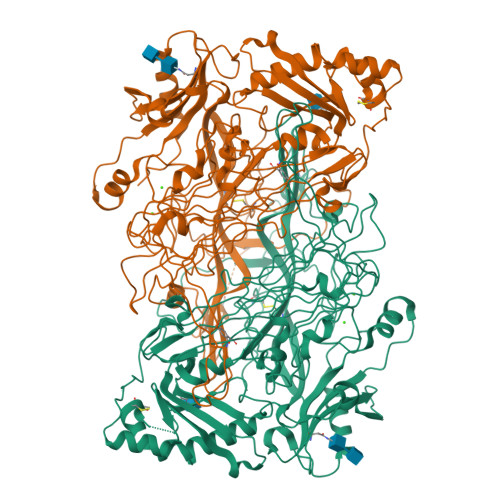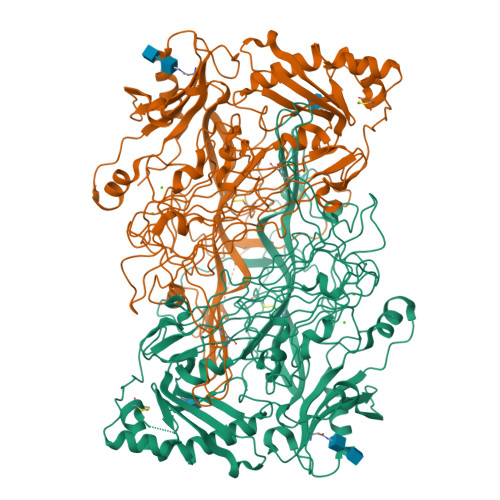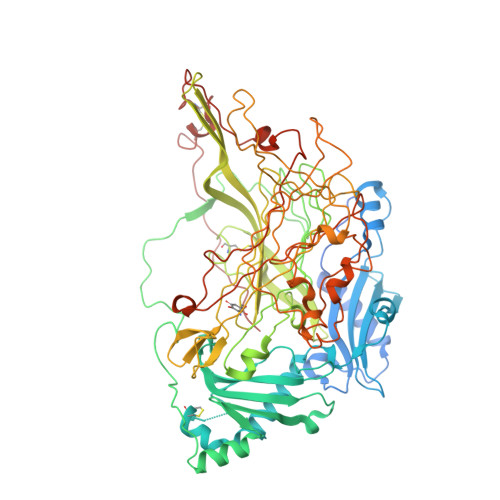Crystal Structure of the Human Vascular Adhesion Protein-1: Unique Structural Features with Functional Implications.
Airenne, T.T., Nymalm, Y., Kidron, H., Smith, D.J., Pihlavisto, M., Salmi, M., Jalkanen, S., Johnson, M.S., Salminen, T.A.(2005) Protein Sci 14: 1964
- PubMed: 16046623
- DOI: https://doi.org/10.1110/ps.051438105
- Primary Citation of Related Structures:
1PU4, 1US1 - PubMed Abstract:
The expression of human vascular adhesion protein-1 (hVAP-1) is induced at sites of inflammation where extravasation of lymphocytes from blood to the peripheral tissue occurs. We have solved the X-ray structure of hVAP-1, a human copper amine oxidase (CAO), which is distinguished from other CAOs in being membrane-bound. The dimer structure reveals some intriguing features that may have fundamental roles in the adhesive and enzymatic functions of hVAP-1, especially regarding the role of hVAP-1 in inflammation, lymphocyte attachment, and signaling. Firstly, Leu469 at the substrate channel may play a key role in controlling the substrate entry; depending on its conformation, it either blocks or gives access to the active site. Secondly, sugar units are clearly observed at two of the six predicted N-glycosylation sites. Moreover, mutagenesis analysis showed that all of the predicted sites were glycosylated in the protein used for crystallization. Thirdly, the existence of a solvent-exposed RGD motif at the entrance to each active site in hVAP-1 suggests that it may have a functional role.
Organizational Affiliation:
Department of Biochemistry and Pharmacy, Abo Akademi University, FIN-20520 Turku, Finland.





















